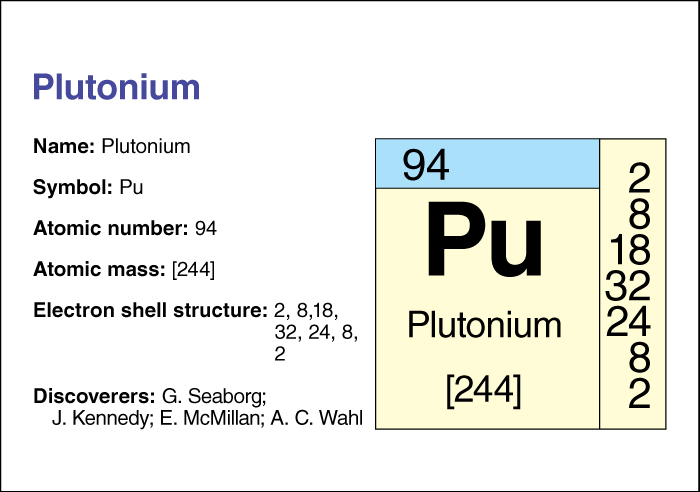Seaborg, Glenn Theodore (1912-1999), an American chemist, became known for contributing to the discovery of several elements that follow uranium on the periodic table. This table lists elements in order of their atomic numbers (numbers of protons). Seaborg and his associate, Edwin M. McMillan, shared the 1951 Nobel Prize in chemistry for the discovery of the elements plutonium (Pu), americium (Am), curium (Cm), berkelium (Bk), and californium (Cf). Seaborg later contributed to the discovery of einsteinium (Es) and mendelevium (Md). All of these elements are radioactive, and all are artificially created.

Seaborg made the first of his discoveries in 1940. That year, he and his associates at the University of California at Berkeley created plutonium by bombarding a sample of uranium with nuclear particles. This process produced a change in the nucleus of the uranium, transmuting the uranium into plutonium (see Transmutation of elements). Similar techniques were later used to produce other transuranium elements. In addition, Seaborg’s isolation of plutonium 239, an isotope that readily undergoes fission (splitting) when struck by neutrons, served as the basis for the development of the plutonium atomic bomb (see Plutonium).
Seaborg was born on April 19, 1912, in Ishpeming, Michigan. He received a Ph.D. in chemistry from the University of California in 1937. After World War II ended in 1945, he became active in the development of nuclear energy for peaceful purposes. From 1961 to 1971, he was chairman of the U.S. Atomic Energy Commission. Seaborg died on Feb. 25, 1999.
